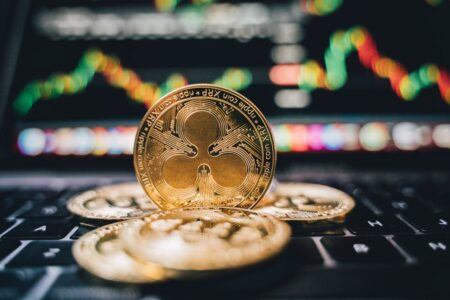Investors are reporting that an increasing number of free digital coins are making an appearance in their wallets. The cryptocurrencies, which are mostly being handed out as part of a marketing exercise, are intended to broaden ownership and raise the profiles of the blockchain start-ups giving them away.
Although the vast majority of these coins are worthless, a small number have actually proven themselves to be rather lucrative. Lumens (XLM) tokens, which were last year distributed to bitcoin holders by Stellar, are now worth around 43 cents each; OmiseGo (OMG), which handed out five percent of its total issuance of coins to ether holders in April, has also seen its price surge – to $17.8 per piece.
Despite its recent gain in popularity, the idea behind airdrops isn’t new. Gavin Andresen, pioneering developer of the first bitcoin faucet, gave out five coins each to those who downloaded the cryptocurrency’s software in 2010, in an attempt to promote its adoption. Now worth almost $45,000, this proved to be a very generous gift for those who received them.
Yet never before has the practice been so widespread. According to AirdropAlert.com, over 2,500 different coins have been airdropped in the last 12 months alone – a phenomenon that simply hasn’t been seen before.
Airdrops Fueled By Regulatory Scrutiny
This trend is largely attributable to increasing scrutiny from the US Securities and Exchange Commission (SEC), which has raised questions over whether tokens from initial coin offerings – a popular fundraising method amongst start-ups – fall under their scope of regulation. The theory is that with airdrops not technically raising capital, they will face fewer hurdles with regards to compliance.
The danger with such a lack of regulation, of course, is that it becomes very easy for the line between legitimate airdrops and downright scams to blur, which is why an increasing number of sites are urging their users not to hand over their private keys no matter what they’re promised in exchange.
This doesn’t mean that airdrops cannot be effective in achieving their marketing goals. Despite suspicion from some sectors, eosDac’s airdrop reportedly helped to boost the value of EOS by double digits, and they’re not the only ones to have enjoyed such successes.
As Marshall Long, the chief gaming director of eBoost, which plans to hold its own airdrop in May, explains: “You kind of think of it as a stock split.” Considering that the company’s Telegram group has grown by 20 percent since the announcement of this event, his argument may well have some merit.
However, as Flipside Crypto’s Dave Balter cautions, airdrops can make the price of a stock more attractive, but what they don’t do is change the underlying worth of the venture: “My sense is it’s a fun idea, but probably short-lived for value.”









